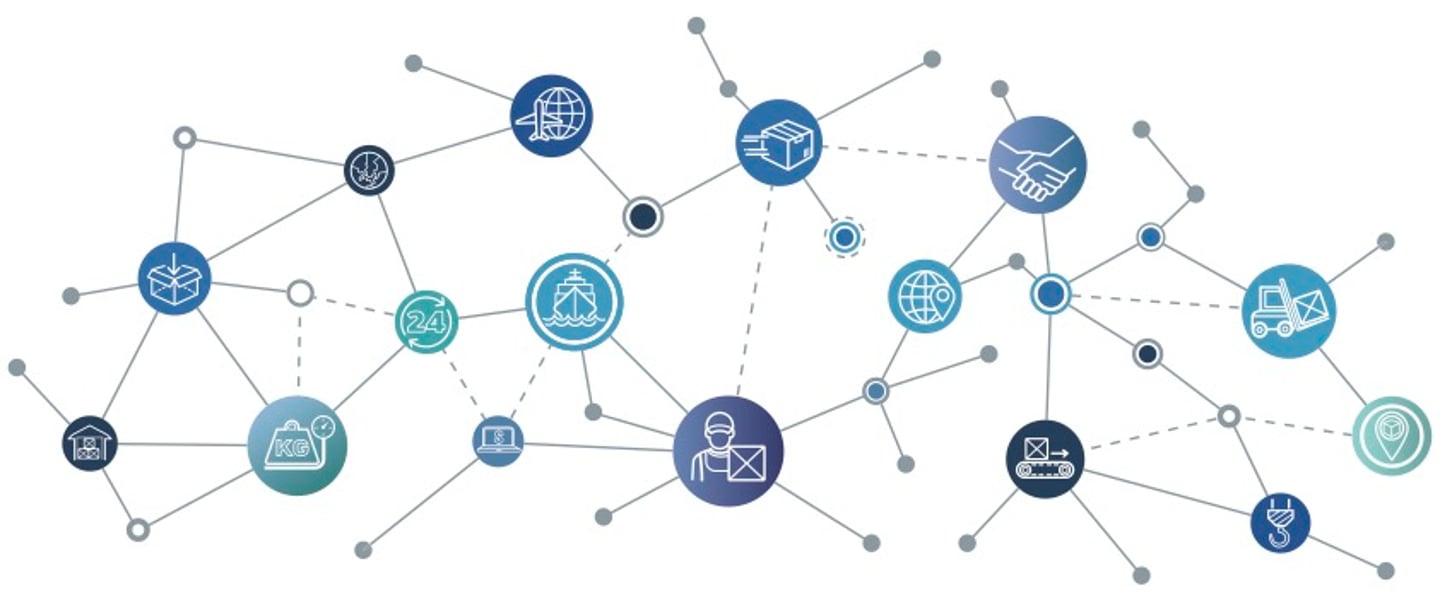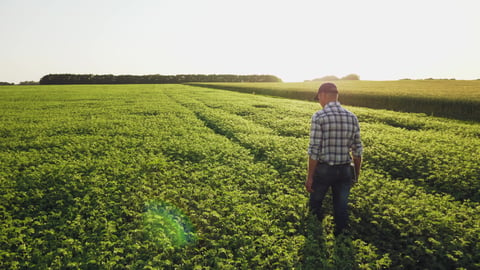What will the supply chain look like in 2022?
The great toilet paper run of 2020 may now be a distant memory, but grocers aren’t out of the woods when it comes to pandemic-induced supply chain woes. Globally, retailers are struggling to secure inventory amid shipping delays, product shortages and rising costs, paired with pent-up consumer demand. Manufacturers are feeling the squeeze, too, faced with labour shortages and a lack of raw materials. While there’s no need to panic—or panic buy—the struggles are hitting home for Canada’s grocery sector.
“Our food supply chain is very robust, however, there are bottlenecks for grocery suppliers in Canada,” says Amar Singh, principal analyst at Kantar Consulting. He notes that raw materials such as chlorine and resin for plastic and packaging are in short supply. In addition, worker shortages continue to plague farms and food processors, which was a problem before COVID-19. And even if goods are ready to go, Singh notes there aren’t enough truckers to move them: there’s a labour shortage in that sector, too. “So, all of these factors are going to accumulate and pose challenges, and that’s one reason we see grocery prices going up for many categories,” he explains.
A recent survey by Food, Health & Consumer Products of Canada (FHCP) highlights the ongoing struggle of getting products on shelves. More than 75% of FHCP members report that moderate to severe labour shortages are impacting their ability to supply products in Canada. Other top factors constraining production include high prices and limited supplies of ingredients, packaging and transportation.
On the produce side, a joint statement from 21 North American produce associations warns that substantial increases in costs and delays along the supply chain threaten food security and the long-term economic viability of the North American fresh produce sector. The groups are calling for “urgent government action” to resolve supply chain disruptions such as crippling port congestion, delays and rising costs in container shipping, labour shortages and stockpiling of product by consumers.
Despite all these challenges, it’s not likely the grocery industry will be hit with widespread product shortages in 2022. “If you’re in the big five—Loblaw, Sobeys, Metro, Walmart and Costco—your supply chains are probably reasonably robust,” says supply chain expert Gary Newbury. “All you’ve got to do is perhaps motivate suppliers to prioritize you over your four competitors.”
While there might be some natural product shortages as a result of changes in demand patterns, Newbury says the staples and products customers would normally expect to find will be on store shelves. “It’s in retailers’ interest to have stuff on the shelf, so they’re fighting very hard to get stuff on their shelves.”
Being an independent grocer also has its benefits when it comes to supply chain disruptions. “We can be quite agile as far as adjusting our supply chain requirements,” says Giancarlo Trimarchi, managing partner at Vince’s Market and chair of the Canadian Federation of Independent Grocers (CFIG). “We’re often not doing our own importing ... So, if a shortage happens we can often pivot and find another supplier.”
On the flip side, when product shortages occur, independent grocers are often last on manufacturers’ lists. “We’re not the priority on supply when it comes to national brands, in particular,” explains Trimarchi. “Because we’re working through our wholesale distributors and oftentimes not getting [goods] direct from manufacturers, we seem to be a bit delayed in catching up with the products that have been disrupted.”
With produce, Trimarchi notes that Vince’s Market sources from the Ontario Food Terminal so the business is less impacted on that front as well. “Unless there is an item-wide shortage at the market, generally speaking, we’re not waiting for a truck to cross the border.” While he doesn’t foresee any shortages of fruits and veggies, there could be perishability issues. “I think that’s a totally realistic expectation: something that might have only taken two to four weeks [to arrive] from picking now comes in at eight weeks old,” he says. “Once it comes out of its refrigerated state and gets put on shelf, it’s going to deteriorate quicker than we’re used to.”
The key to mitigating that issue is having good core operating standards: ordering the right amount, training staff on how they’re culling the produce, and ensuring customers aren’t receiving substandard products.
How to strengthen supply chain resilience
For grocers, other lessons learned during the COVID-19 crisis can help them navigate today’s supply chain challenges and build resilience. “One big learning was that machine learning and artificial intelligence does not work when you have things like pandemics and other major disruptions,” notes Singh. “So, you have to go back to the fundamentals of retailing, which is optimizing your assortment with products that you can secure in a timely fashion and with more reliability. Focus on the marquee SKUs that sell well and have fewer constraints.”
The big lesson for Vince’s Market was the importance of having robust vendor relationships and multiple supplier partners. Trimarchi says it’s a win-win to have open lines of communication with vendors and provide ample opportunities for them to win the business. “And when you have multiple relationship channels, if you start to experience shortages in a particular product line or category, you have alternatives you can go to quickly.”
Another consideration is that it may be time to put down the pencils and start paying more attention to the frontlines. “The people making the purchasing and category decisions need to be tied to what’s happening on the sales floor,” says Trimarchi. “Not just with statistics and spreadsheets, but to what trends are starting to form, what the staff are saying they’re starting to see issues with, and what the truck drivers are saying at the loading dock. You just have to be hyper-connected right now and then be prepared to be responsive.”
While the pandemic taught everyone to expect the unexpected, the recent floods and mudslides in British Columbia are also a reminder to be prepared for the next disruption. The weather-related events, which shut down highways and railways and cut access to the Port of Vancouver, also led to empty grocery store shelves in some areas of the province.
Sylvain Charlebois, senior director of the Agri-food Analytics Lab at Dalhousie University, says while retailers are very good at adapting and working with their supply chains to secure product, the biggest challenge is managing consumers’ expectations and making sure they don’t panic buy.
“Panic buying is the worst. You want to encourage people to do the opposite and buy a little at a time and visit the stores more often,” he says. “Especially now, we’re hearing certain products like produce aren’t as fresh and they’ll be ripe much more quickly at home, as supply chains are much slower than they used to be. That was even before the floods. And so, you want to encourage people to visit your stores as much as possible. Rationing is also quite appropriate, especially in the middle of a crisis like this.”
Supply chain disruptions aside, one major factor on the horizon for 2022 is the proposed grocery code of conduct, which will create rules for how suppliers and retailers do business with each other. Newbury says there was “a slight glimmer of hope” in how collectively big grocers worked with their suppliers at the height of the pandemic.
“They came to an understanding to reduce their SKUs and they could only focus on so many products, so that all of the big players and the independents going through the buying groups were able to get something on their shelves,” says Newbury adding that suppliers and retailers experienced real collaboration during this period, but, unfortunately, the collaborative spirit didn’t last long.
Among the issues the code of conduct aims to address are the lack of predictability and transparency with regards to retail fees and barriers to market access for small suppliers. “I think the code of conduct will start to level the playing field,” between retailers and suppliers and remove some of the barriers to innovation, says Newbury. “As retailers, we’ll need new, exciting products and choice,” he adds, and when suppliers are under pressure, “the first thing that tends to disappear is their ability to innovate on product development.”
This article appeared in Canadian Grocer's December 2021/January 2022 issue.




